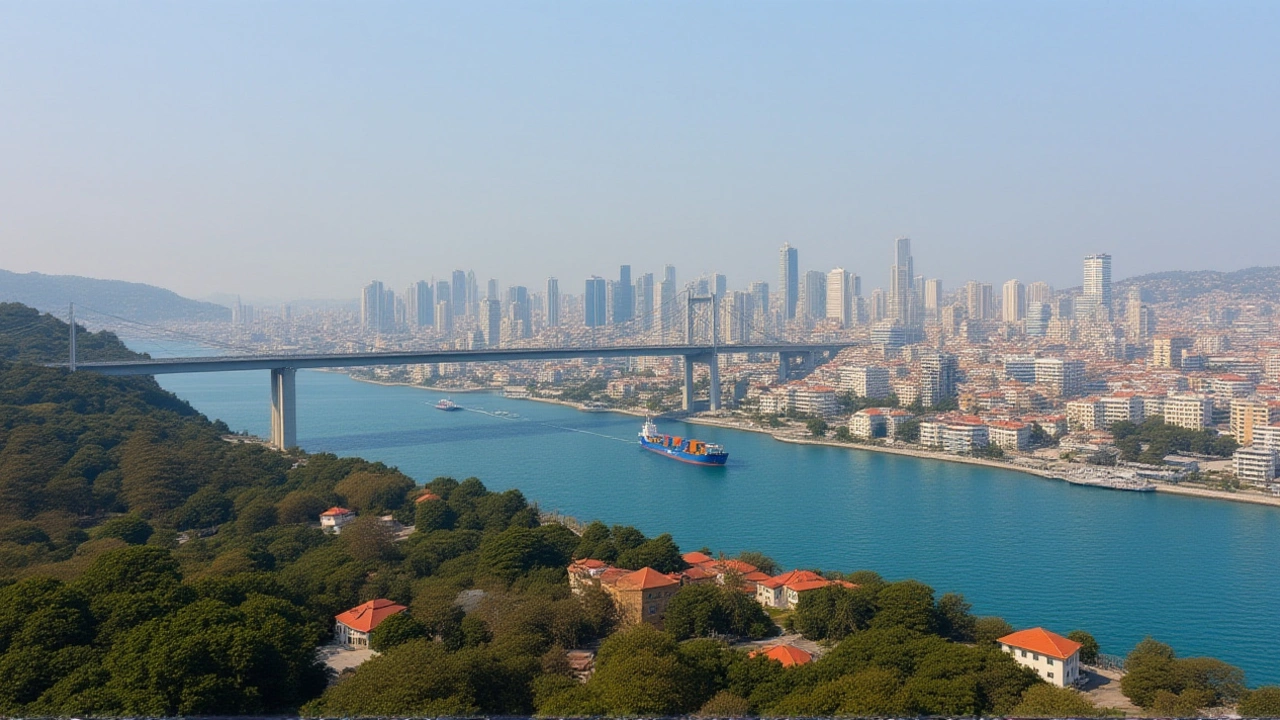A 6.1-magnitude earthquake jolted western Turkey just after 10 p.m. local time on Monday, October 27, 2025, sending residents of Istanbul and Izmir sprinting into the streets in panic. The tremor, centered just 5.99 kilometers beneath the hillside town of Sındırgı in Balıkesir province, was shallow, violent, and unmistakable — even those who’d lived through the devastating 2023 quake said this one felt unnervingly familiar.
Buildings That Shouldn’t Have Been Standing
Three structures collapsed in Sındırgı — two four-story buildings on Akhisar Street and a single two-story building in Cumhuriyet Square. Here’s the chilling detail: the two larger buildings had already been evacuated and sealed after the exact same magnitude quake hit this same district on August 10, 2025. They weren’t just damaged — they’d been marked for demolition. Yet they still stood. And now, they were gone. The ground-floor shops in Cumhuriyet Square were empty, but the upper floors held stored goods. No lives were lost — yet. That’s a miracle, not a guarantee.
Dogukan Koyuncu, the district administrator of Sındırgı, told the Anadolu Agency: ‘So far, we have not identified any loss of life, but we are continuing our assessment.’ His tone was cautious, not relieved. The same quake in August killed one man and injured dozens. This time, 22 people were hurt — mostly from falling debris, running into walls, or heart attacks triggered by the shock. One woman in Yalova collapsed while fleeing her apartment. She’s recovering. But what if she hadn’t been lucky?
A Region That Keeps Getting Hit
Turkey sits on a geological nightmare. The North Anatolian Fault, the Aegean extensional zone, and other active lines crisscross the country like cracks in an old porcelain vase. The February 2023 earthquakes southeastern Turkey killed over 53,000 people. The July 2025 tremor in Balıkesir took one life and injured 69. And now, two 6.1-magnitude quakes in the same town within three months.
After the August quake, 729 buildings were severely damaged. Seventy-three mosques lost minarets. An 82-year-old man died trapped under rubble. A 66-year-old was crushed by falling plaster from a mosque in Gördes. The owner and contractor of the fatal building were arrested for ‘causing death by negligence.’ So why were those Akhisar Street buildings still standing — and un-demolished — by October?
Emergency Response and the Air Traffic Shutdown
Interior Minister Ali Yerlikaya was quick to respond: ‘AFAD and all of its teams have begun working on the ground.’ The Türkiye's Disaster and Emergency Management Authority (AFAD) deployed teams within minutes. Schools closed. Public buildings opened as shelters. Over 1,000 personnel were mobilized — the same number as after August’s quake.
At Istanbul Airport and Sabiha Gökçen International Airport, air traffic halted for nearly 90 minutes. Runway inspections were mandatory. Flights were diverted. Passengers waited in terminals, phones buzzing with alerts. ‘We thought it was the 2023 quake all over again,’ said one traveler from Germany, clutching her child. ‘I didn’t know whether to run or stay put.’
Aftershocks, Fear, and a Nation on Edge
Within minutes, AFAD recorded three significant aftershocks: 4.2, then 4.0, then another 4.0. The ground didn’t stop shaking for hours. In Gördes, Manisa, ceilings cracked, walls split open, and a car was crushed by a falling wall. Residents in Yalova wrapped themselves in blankets, terrified to go back inside. The temperature had dropped to 9°C. Some slept in cars.
President Recep Tayyip Erdoğan offered condolences and promised ‘unwavering support.’ But promises don’t rebuild homes. And people are asking: why do we keep losing buildings that were supposed to be condemned? Why do inspections take months? Why do contractors get arrested after people die — not before?
What’s Next for Turkey’s Earthquake Preparedness?
This isn’t just about one town. It’s about a pattern. The August 10, 2025 earthquake Sındırgı and this October event are bookends to a terrifying trend: small quakes, repeated, with inadequate response between them. Experts warn that the seismic stress in this region is building. The next big one — 7.0 or higher — could come in the next decade. Or next month.
AFAD says it’s ‘monitoring closely.’ But monitoring doesn’t save lives. Enforcement does. Structural audits do. Timely demolitions do. And right now, in western Turkey, people are waiting — not for the next quake — but for someone to finally act before it’s too late.
Frequently Asked Questions
Why were the buildings in Sındırgı still standing after being condemned?
Despite being marked for demolition after the August 10, 2025 earthquake, the two four-story buildings on Akhisar Street remained standing due to delays in bureaucratic clearance and funding for removal. Local officials cited paperwork backlogs and contractor disputes as reasons for the delay. This is not uncommon in Turkey, where post-earthquake demolition timelines often stretch for months — even when structures are deemed unsafe.
How does this compare to the 2023 earthquakes?
The February 2023 earthquakes in southeastern Turkey were far deadlier — magnitude 7.8 and 7.5 — killing over 53,000 people and flattening entire cities. But the October 2025 quake in Balıkesir is part of a growing cluster of moderate-to-strong quakes in western Turkey, suggesting a shift in seismic stress patterns. While less catastrophic individually, their frequency and proximity to populated areas raise serious concerns about long-term resilience.
What caused the injuries if no buildings collapsed on people?
Of the 22 injuries reported, nearly half were panic-related: heart attacks, falls while running, collisions with falling debris from non-structural elements like tiles or balconies. In Yalova, a woman suffered a stroke while fleeing. In Manisa, plaster and bricks from aging facades struck pedestrians. These aren’t ‘minor’ injuries — they’re preventable deaths waiting to happen in poorly maintained urban zones.
Why were airports shut down for runway checks?
Even minor quakes can cause micro-cracks in airport runways or dislodge navigation equipment. Istanbul Airport, one of the world’s busiest, underwent emergency inspections after the quake. Though no damage was found, protocols require closure for safety assessments. Similar shutdowns occurred after the July 2025 quake. Delays like these cost airlines millions — but officials say the risk of a plane veering off a compromised runway is too great to ignore.
What’s being done to prevent future collapses?
AFAD has launched a new rapid-response audit program for buildings flagged after previous quakes, aiming to reduce demolition delays from six months to 30 days. But critics say enforcement remains weak. In Sındırgı, the contractor of the fatal August building was arrested — but no new building codes have been passed since 2023. Without legal teeth, these efforts risk becoming symbolic.
Is Istanbul at risk of a major earthquake soon?
Seismologists warn that the North Anatolian Fault continues to accumulate stress near the Sea of Marmara, with Istanbul sitting directly above it. While the October quake was too far south to directly relieve that pressure, it’s a reminder that the region is active. The last major quake to hit Istanbul was in 1999 — over 25 years ago. Experts say the city is overdue for a large event, and preparation remains inadequate.





